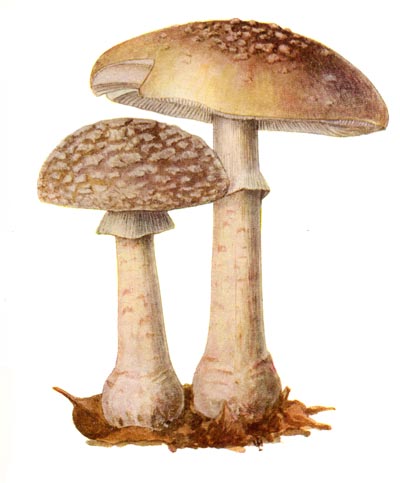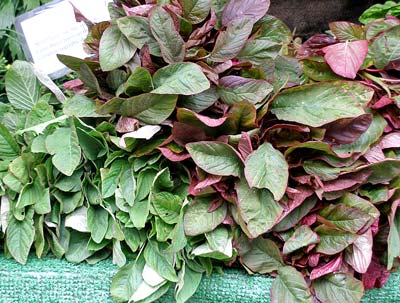Amandine is a small, yellow variety of new potato good for steaming, salads and sautéeing.
A genus of mushrooms, including edible and poisonous species. Coucoumelle, Caesar’s mushroom (oronge) are excellent, blusher and common grisette are acceptable, but they also include the death cap.
Grisette. A slender mushroom of the amanite family with a pale grey, ribbed cap, mild scent and flavour. It must be eaten well cooked or it will cause gastro -intestinal problems.

Fly agaric. A type of mushroom, the classic red with white spots. Famous for its psychoactive hallucinogenic properties this is the magic mushroom and is actually poisonous to eat.

Caesar's mushroom. Excellent raw in salads or grilled, stuffed or used as a garnish.

Fly agaric. A type of mushroom, the classic red with white spots. Famous for its psychoactive hallucinogenic properties this is the magic mushroom and is actually poisonous to eat.

The blusher. The one problem with this mushroom is that, whilst edible itself, it closely resembles others that are poisonous, including the death cap. It must be cooked as it contains a toxin which is destroyed by heat, like kidney beans. The most identifiable thing about it is that this reddish brown mushroom with pinkish grey scales and a white stem colours pink to red at sites of damage or bruising. The gills and flesh are white, also becoming red or pink on bruising. It is most commonly found in beech woods in summer to late autumn (US: fall). Also look closely at the ring on the stem. This should have lots of fine grooves on its upper side, unlike another poisonous mushroom which it closely resembles, the panther cap.

Fly agaric. A type of mushroom, the classic red with white spots. Famous for its psychoactive hallucinogenic properties this is the magic mushroom and is actually poisonous to eat.

The blusher. The one problem with this mushroom is that, whilst edible itself, it closely resembles others that are poisonous, including the death cap. It must be cooked as it contains a toxin which is destroyed by heat, like kidney beans. The most identifiable thing about it is that this reddish brown mushroom with pinkish grey scales and a white stem colours pink to red at sites of damage or bruising. The gills and flesh are white, also becoming red or pink on bruising. It is most commonly found in beech woods in summer to late autumn (US: fall). Also look closely at the ring on the stem. This should have lots of fine grooves on its upper side, unlike another poisonous mushroom which it closely resembles, the panther cap.

Amaranth. This covers many varieties of a sweetish green leafy vegetable known by many different names, including callalloo, elephant’s ear, African/Chinese/Ceylon/Indian spinach, Surinam amaranth, basella etc. Most commonly it is a tropical climbing plant that can grow as high as 2 meters (6 ft), the leaves being harvested as the plant grows and cooked in the same way as spinach. In India the most common is Basella alba or Indian Spinach.